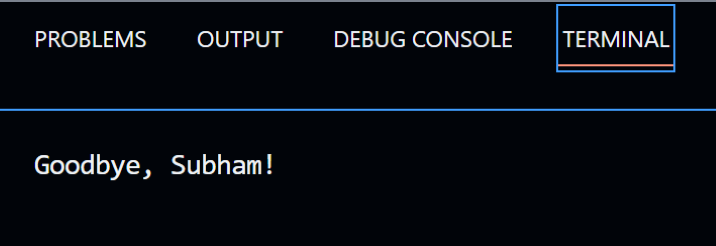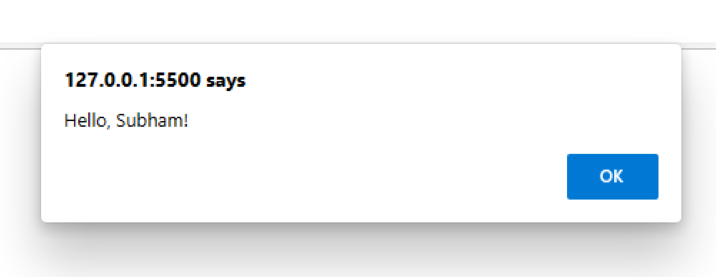How to share code between Node.js and the browser?
Sharing code between the backend and frontend of a full-stack application can be a challenging task. However, it is essential for building maintainable and scalable applications. By sharing code, we avoid code duplication, reduce development time, and maintain consistency across applications.
In this tutorial, we will explore different techniques for sharing code between Node.js and the browser, and learn how to choose the best method for our project.
Techniques for sharing code between Node.js and the browser
Users can share code between node.js and browsers as follows -
CommonJS module
CommonJS modules are a widely used and simple way to organize and share code in Node.js. Many Node.js packages are built using CommonJS modules because they are easy to use.
However, they do not work in the browser by default. To use CommonJS modules in the browser, we have to use tools like Browserify or Webpack. These tools can create a single JavaScript file that can run in Node.js and the browser. Depending on the target environment, they can also convert our code from CommonJS to ES modules or vice versa.
If we are building a Node.js application and want to reuse some server-side code in the browser, CommonJS modules are a good choice.
ES module
ES modules are a modern and native way to organize and share code in web browsers and Node.js. They are simple to use, and many modern front-end frameworks, such as React and Vue.js, support ES modules out of the box
We can share code between Node.js and the browser using a package manager such as npm or Yarn. We can publish the code as a package and install it in both environments using a package manager.
If we want to use a modern and standardized way to organize and share code between the backend and frontend of the application, ES modules are a good choice.
Universal JavaScript
Universal JavaScript, also known as isomorphic JavaScript, allows us to write code that runs on both the server and the client. This helps improve performance, reduce page load times, and enhance SEO.
Universal JavaScript requires a lot of upfront configuration and can be complex to set up. Additionally, some libraries and APIs may work differently on the server and client, causing unexpected errors.
This is a good choice if we need to build a high-performance and scalable application with server-side rendering and want to share as much code as possible between the backend and frontend.
By understanding these three methods, users can choose the one that best suits their project requirements and development preferences.
Use Webpack to share Node.js code with browsers
Build tools like Webpack are a powerful way to share code between Node.js and the browser. Users can follow these steps to share code between Node.js and browsers using Webpack -
Step 1 - First, we need to install Webpack on our computer.
npm install --save-dev webpack webpack-cli
Step 2 - Next, we need to create a Webpack configuration file to specify how to bundle our code. Here is a simple example of the file:
module.exports = {
entry: './src/index.js',
output: {
filename: 'bundle.js',
path: __dirname + '/dist'
}
}; Step 3 - After that, we can write the code as we normally would in Node.js or the browser.
Step 4 - Now, we need to bundle our code using the following command -
npx webpack --mode=development
Step 5 - Finally, we can use the bundle in Node.js or browser applications by including it in an HTML file or requiring it in Node.js code .
For example, if we use the default configuration from step 2, we can include the package in an HTML file as follows -
<!DOCTYPE html>
<html>
<head>
<meta charset="utf-8">
<title> My App </title>
</head>
<body>
<script src = "dist/bundle.js"> </script>
</body>
</html>
Example
This example demonstrates how to define and export functions for Node.js and browsers using common JavaScript methods. In the myLibrary.js file, we define two functions greet() and goodbye(), which can be used in Node.js and browser environments. The code checks whether the module exists and exports Node.js's functions while exporting them to the browser's window object.
In the index.js file, we use the require() function to import the myLibrary.js module, and then use the parameters to call the exported function goodbye().
In the index.html file, we include the myLibrary.js file as a script tag, and then use the script tag to call the exported function greet() with parameters.
In this way, we can create a common and reusable code base that can be used in Node.js and browser environments, and the code will run correctly in each environment.
myLibrary.js
if (typeof module !== 'undefined' && module.exports) {
// code for Node.js
module.exports = {
// exported functions or objects for Node.js
greet: function(name) {
console.log('Hello, ' + name + '!');
},
goodbye: function(name) {
console.log('Goodbye, ' + name + '!');
}
};
} else {
// code for the browser
window.myLibrary = {
// exported functions or objects for the browser
greet: function(name) {
alert('Hello, ' + name + '!');
},
goodbye: function(name) {
alert('Goodbye, ' + name + '!');
}
};
}
index.js
const myLibrary = require('./myLibrary');
myLibrary.goodbye('Subham');
index.html
<html lang="en">
<head>
<title> NodeJs & Browser </title>
</head>
<body>
<script src = "myLibrary.js" > </script>
<script>
myLibrary.greet('Subham');
</script>
</body>
</html>
Output


In this tutorial, users learned different techniques for sharing code between Node.js and the browser, including CommonJS modules, ES modules, and universal JavaScript. Each method has its advantages and disadvantages, and the choice depends on project requirements and development preferences.
Following the steps mentioned in this tutorial, users can create a Webpack configuration file that specifies how their code should be bundled, allowing them to write code as they normally would in Node.js or the browser. We also saw examples of how to use common JavaScript methods to define exported functions for Node.js and browsers.
The above is the detailed content of How to share code between Node.js and the browser?. For more information, please follow other related articles on the PHP Chinese website!

Hot AI Tools

Undresser.AI Undress
AI-powered app for creating realistic nude photos

AI Clothes Remover
Online AI tool for removing clothes from photos.

Undress AI Tool
Undress images for free

Clothoff.io
AI clothes remover

Video Face Swap
Swap faces in any video effortlessly with our completely free AI face swap tool!

Hot Article

Hot Tools

Notepad++7.3.1
Easy-to-use and free code editor

SublimeText3 Chinese version
Chinese version, very easy to use

Zend Studio 13.0.1
Powerful PHP integrated development environment

Dreamweaver CS6
Visual web development tools

SublimeText3 Mac version
God-level code editing software (SublimeText3)

Hot Topics
 1386
1386
 52
52
 What should I do if I encounter garbled code printing for front-end thermal paper receipts?
Apr 04, 2025 pm 02:42 PM
What should I do if I encounter garbled code printing for front-end thermal paper receipts?
Apr 04, 2025 pm 02:42 PM
Frequently Asked Questions and Solutions for Front-end Thermal Paper Ticket Printing In Front-end Development, Ticket Printing is a common requirement. However, many developers are implementing...
 Who gets paid more Python or JavaScript?
Apr 04, 2025 am 12:09 AM
Who gets paid more Python or JavaScript?
Apr 04, 2025 am 12:09 AM
There is no absolute salary for Python and JavaScript developers, depending on skills and industry needs. 1. Python may be paid more in data science and machine learning. 2. JavaScript has great demand in front-end and full-stack development, and its salary is also considerable. 3. Influencing factors include experience, geographical location, company size and specific skills.
 How to merge array elements with the same ID into one object using JavaScript?
Apr 04, 2025 pm 05:09 PM
How to merge array elements with the same ID into one object using JavaScript?
Apr 04, 2025 pm 05:09 PM
How to merge array elements with the same ID into one object in JavaScript? When processing data, we often encounter the need to have the same ID...
 Demystifying JavaScript: What It Does and Why It Matters
Apr 09, 2025 am 12:07 AM
Demystifying JavaScript: What It Does and Why It Matters
Apr 09, 2025 am 12:07 AM
JavaScript is the cornerstone of modern web development, and its main functions include event-driven programming, dynamic content generation and asynchronous programming. 1) Event-driven programming allows web pages to change dynamically according to user operations. 2) Dynamic content generation allows page content to be adjusted according to conditions. 3) Asynchronous programming ensures that the user interface is not blocked. JavaScript is widely used in web interaction, single-page application and server-side development, greatly improving the flexibility of user experience and cross-platform development.
 The difference in console.log output result: Why are the two calls different?
Apr 04, 2025 pm 05:12 PM
The difference in console.log output result: Why are the two calls different?
Apr 04, 2025 pm 05:12 PM
In-depth discussion of the root causes of the difference in console.log output. This article will analyze the differences in the output results of console.log function in a piece of code and explain the reasons behind it. �...
 How to achieve parallax scrolling and element animation effects, like Shiseido's official website?
or:
How can we achieve the animation effect accompanied by page scrolling like Shiseido's official website?
Apr 04, 2025 pm 05:36 PM
How to achieve parallax scrolling and element animation effects, like Shiseido's official website?
or:
How can we achieve the animation effect accompanied by page scrolling like Shiseido's official website?
Apr 04, 2025 pm 05:36 PM
Discussion on the realization of parallax scrolling and element animation effects in this article will explore how to achieve similar to Shiseido official website (https://www.shiseido.co.jp/sb/wonderland/)...
 TypeScript for Beginners, Part 2: Basic Data Types
Mar 19, 2025 am 09:10 AM
TypeScript for Beginners, Part 2: Basic Data Types
Mar 19, 2025 am 09:10 AM
Once you have mastered the entry-level TypeScript tutorial, you should be able to write your own code in an IDE that supports TypeScript and compile it into JavaScript. This tutorial will dive into various data types in TypeScript. JavaScript has seven data types: Null, Undefined, Boolean, Number, String, Symbol (introduced by ES6) and Object. TypeScript defines more types on this basis, and this tutorial will cover all of them in detail. Null data type Like JavaScript, null in TypeScript
 Can PowerPoint run JavaScript?
Apr 01, 2025 pm 05:17 PM
Can PowerPoint run JavaScript?
Apr 01, 2025 pm 05:17 PM
JavaScript can be run in PowerPoint, and can be implemented by calling external JavaScript files or embedding HTML files through VBA. 1. To use VBA to call JavaScript files, you need to enable macros and have VBA programming knowledge. 2. Embed HTML files containing JavaScript, which are simple and easy to use but are subject to security restrictions. Advantages include extended functions and flexibility, while disadvantages involve security, compatibility and complexity. In practice, attention should be paid to security, compatibility, performance and user experience.




